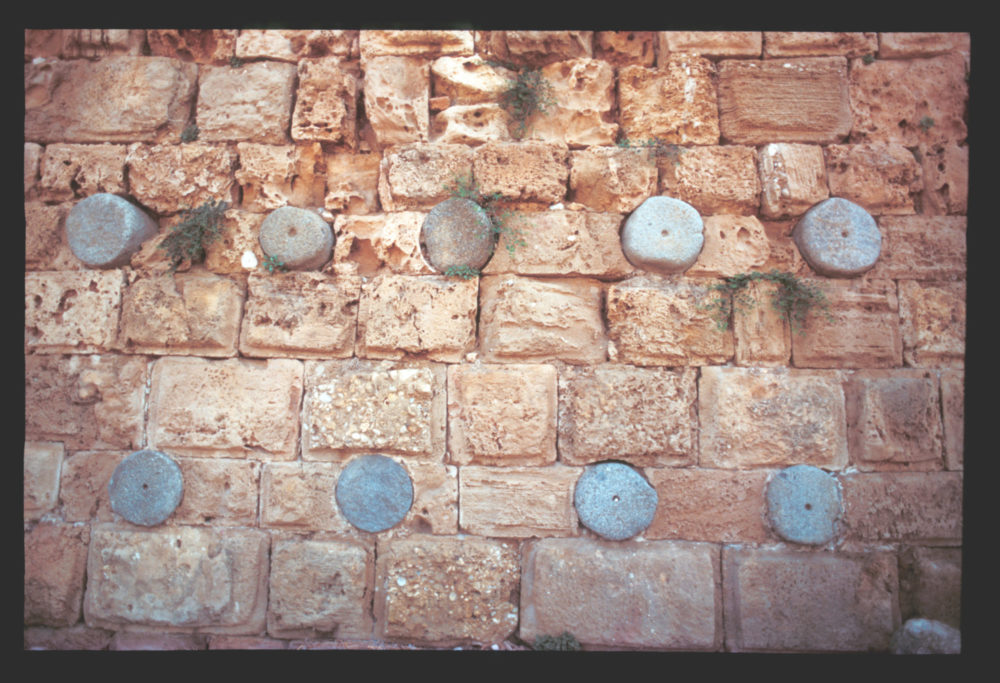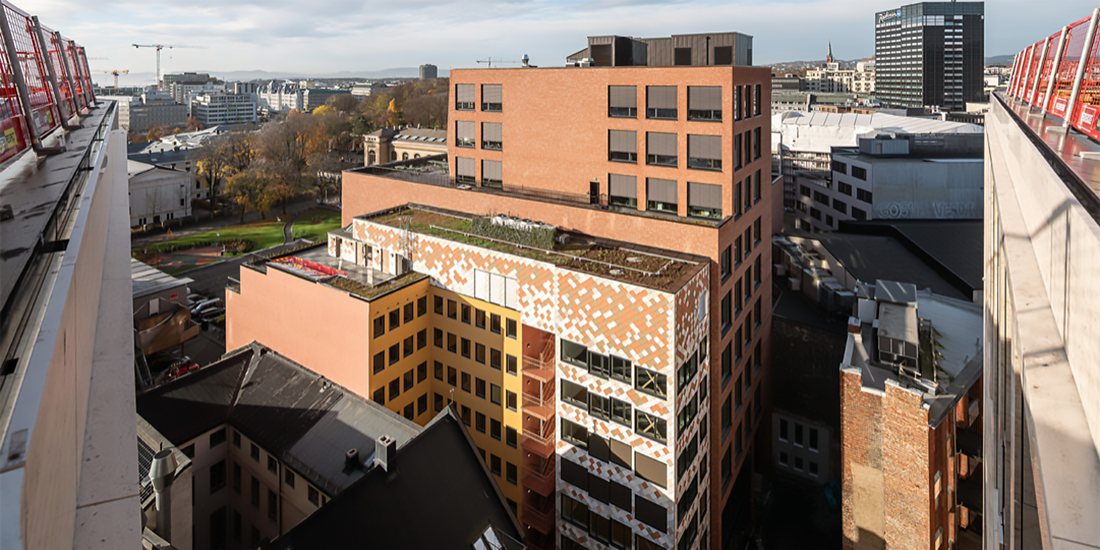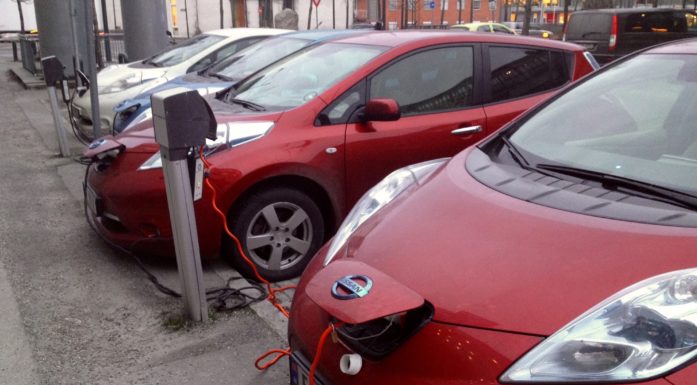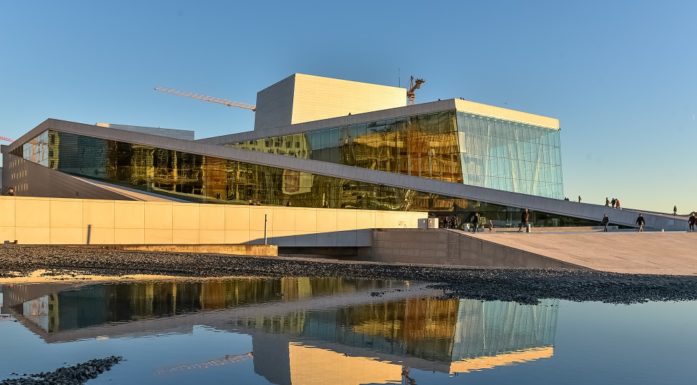Building with new thinking and old components
An old building at Tullinløkka in Oslo has set a new standard for reuse, consisting of components from other buildings – like concrete floor dividers from a government building. Building stock in Norway accounts for half of society’s total environmental impact. Thinking in new ways and reusing building components offers multiple gains.
On 21 February of this year, the leaders of seven Norwegian cities published a notice on new environmental requirements for the construction industry to make it more sustainable.
The notice points out that construction sites account for 20 per cent of society’s total emissions. And those emissions are only those that are generated by the construction work itself.
Norwegian Standard (NS) 3454 presupposes that a building must serve various owners and users for a minimum of 60 years. That time frame is not included in the city forecast. If the city leaders had included the building’s entire life cycle, the emissions would come to 40 per cent of total emissions.
Additional emissions indirectly created by buildings include the transport needs they generate, environmental impacts via social and health conditions for people living or working in and near the buildings, and their positive or negative impact on the neighbourhood.
A light bulb has to be replaced every year, whereas a Roman granite pillar from Aswan holds up well for a couple of thousand years.
A conservative estimate for this emissions load would come to about 10 per cent, meaning that our built environment accounts for approximately 50 per cent of society’s total environmental impact.
The global percentage is about the same.
Simply making a construction site emission-free is not enough to handle these environmental impacts. The service life of the building – and of the building’s components – also needs to increase. We’ll return to this later.
Sustainability and learning
Life cycle costs (LCC) are usually calculated based on costs for management, operations and maintenance (MOM = Norwegian FDV).
In the last 10 to 15 years, LCC calculations have begun to include the costs of development (MOMD = Norwegian FDVU) .
In this context, ‘development’ refers to the building gradually evolving as it is upgraded to meet new requirements or is adapted to new needs. Stewart Brand calls this evolution ‘how buildings learn’. If, with the help of MOMD, you can ‘teach the building’ to fulfil new functions and meet new requirements so that it can complete another life cycle, then you can save an environmental impact that corresponds to the demolition and rebuilding of the entire building.
By zooming in and looking closely at a building, we recognize that it’s more like a collection of components than one solid entity.
As users, we primarily interact with the building through its individual components: the door handle, the window, the brick in the wall, the wallpaper, the floor covering, the water pipe, the sink, the light switch, and so on. Owners or managers, similarly interact at the component level when they maintain the building.
Each component has a different service life. A light bulb needs to be replaced every year, whereas a Roman pillar of granite from Aswan holds up well for a couple of thousand years. Imagine if the life of the building were defined by the individual building parts. Would we change buildings when the light bulb burns out? Or do we have to wait until the granite column collapses? Of course not. Light bulbs can be replaced, granite columns can be moved and buildings can learn.

The practice of reuse is as old as the art of building itself: the Crusaders used Roman columns as building blocks in the citadel of Byblos. Photo: Ole Møystad
The MOMD plan accumulates knowledge and information about these components. Over time, the knowledge can be transferred to the buildings of the future and likewise over distance to neighbouring buildings or other neighbourhoods – to the urban context of the building.
Approaching construction in this manner engages building, user and neighbourhood in a mutual interaction, between past and future. This collaboration constitutes a learning loop and a potential for reuse and a circular economy that will be able to reduce the environmental impact of our built environment dramatically.
The Manhattan skyline is propelled by the elevator. Or more precisely – by the braking system that prevents the lift from crashing down should the cable snap.
Think how many new buildings and new building components could have been replaced by new ideas about (the new use of) old buildings and building components that already existed.
- You might also like: Retrofitting dams for more renewable energy in the world
Cities as a field of components, knowledge and action
Imagine a magnetic field. We’ve all done physics exercises where we scattered metal shavings on a white sheet, held a magnet under the sheet and seen how the magnet’s forces organized the shavings in an orderly pattern.
The pattern makes the shape of the magnet’s forces visible to us. In a city, people’s thinking and actions are what give shape to the field of physical components. In the magnetic field, bringing magnets, sheets and shavings together makes the field’s shape appear physical. In the city, it is the interplay between thinking and concrete action that creates the city’s form.
On the other hand, a Tesla ends up in a junkyard much faster than a diesel-powered Toyota Corolla – because a Tesla is so cheap to buy that it pays for insurance to discard it and buy a new one rather than repair it.
The Manhattan skyline is propelled by the elevator. Or more precisely – by the braking system that prevents the lift from crashing down should the cable snap.
In Cuba, the 60-year trade blockade has forced the development of sophisticated systems for the reuse of both car parts and building components and developed them into some of Havana’s major attractions.
The skills used by the Roman stonemasons exist in the same field as new insights and knowledge that will continue to be developed by the construction industry of the future.
If we look at our built environment through MOMD glasses, we can imagine that the building components function like the metal shavings in the physics exercise. They create a field of space, things, functions and forces that together form our built environment. This field has urban dimensions. Think of Manhattan, Havana, Byblos, but also Entra’s project KA13 in Oslo.
The field extends as far back in history as the art of architecture and as far into an unknown future as human ingenuity and thinking can reach.
This field of physical components embodies the three pillars of the UN’s sustainability goals: environment, financial resources and human resources.
The impetus for sustainable development is hidden in the collaboration between the three sustainability goals.
Simplest isn’t always best
City leaders demand emission-free construction sites. That’s good. In the construction industry, electrification of machinery is the lowest-hanging fruit.
It is easy to facilitate sustainability by replacing a diesel-powered truck with an electric one, or by replacing diesel-powered equipment on construction sites with mains power. Likewise, electrifying the Norwegian Continental Shelf is simple, but it doesn’t significantly limit oil production.
The lowest level of the green shift consists of actions that are the most concrete, the easiest to access and the easiest to sell. That is the temptation of low-hanging fruit.
However, at this level individual measures have the lowest environmental effect, and it is also where measures can most easily be utilized against their purpose – like when electric cars are helped into the market through tax breaks and other public subsidies that halve the price of a new car. A market share of 50 per cent of new car sales can be quickly achieved this way.
On the other hand, a Tesla ends up in a junkyard much faster than a diesel-powered Toyota Corolla – because a Tesla is so cheap to buy that it pays for insurance to discard it and buy a new one rather than to repair it (MOM).
In a lecture on the work on Amsterdam’s new plan for the circular economy, Ellen van Bueren, a professor at TU Delft, illustrated a similar problem at the city level, but in the opposite direction.
During the development of the Buiksloterham district, the goal was for the residents themselves to develop an emission-free district. They developed local, closed circular systems for water and sewerage, but were held up by the municipality’s demands to connect to Amsterdam’s new, central state-of-the-art HVAC system.
The residents eventually won the right to implement their own system, while the municipality’s large investment remained unused.
Economist Mariana Mazzucato points out that implementation at a higher level often presupposes systems that cross administrative and business sectors. Decisions and implementation involving different owners, budgets and authorities in turn mean that an intervention might cross different value chains.
In other words, one actor could end up absorbing the costs of a good and important measure, while another actor ends up benefitting from it.
Implementing effective interventions at this level thus often requires forming other value chains and new supply systems. This is complicated because it may challenge the established order in existing institutions, legislation and companies, as with the sewerage system in Buiksloterham. People have to dare to envision new resource systems, create new value chains and build new business models.
Systemic change is expensive, but stimulating concrete and direct action is perfectly possible through applying abstract and complex systems thinking. The good news is that the resulting financial benefits can be significant, lasting, social – and green.
URBAN TRIGGER TECHNOLOGIES is a professional group under Urban Trigger Agency AS. UTA is an offshoot of the academic Urban Trigger Group at IAP in NTNU’s Faculty of Architecture and Design.





